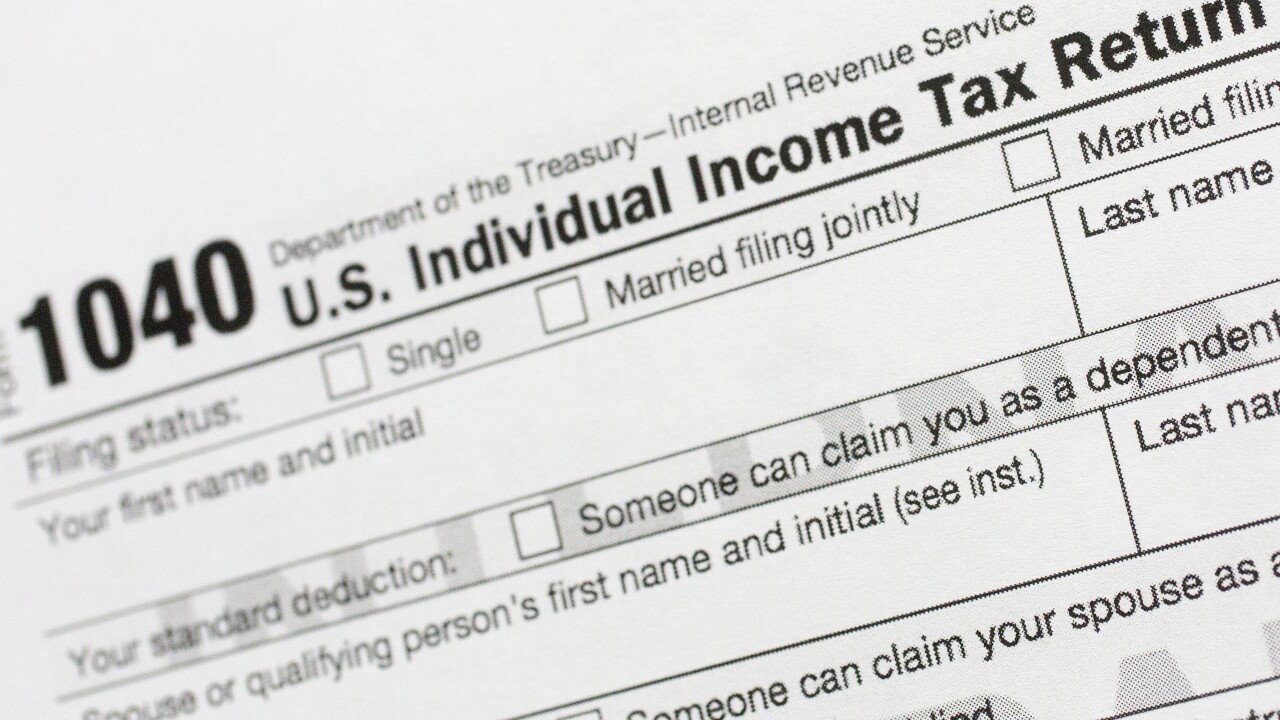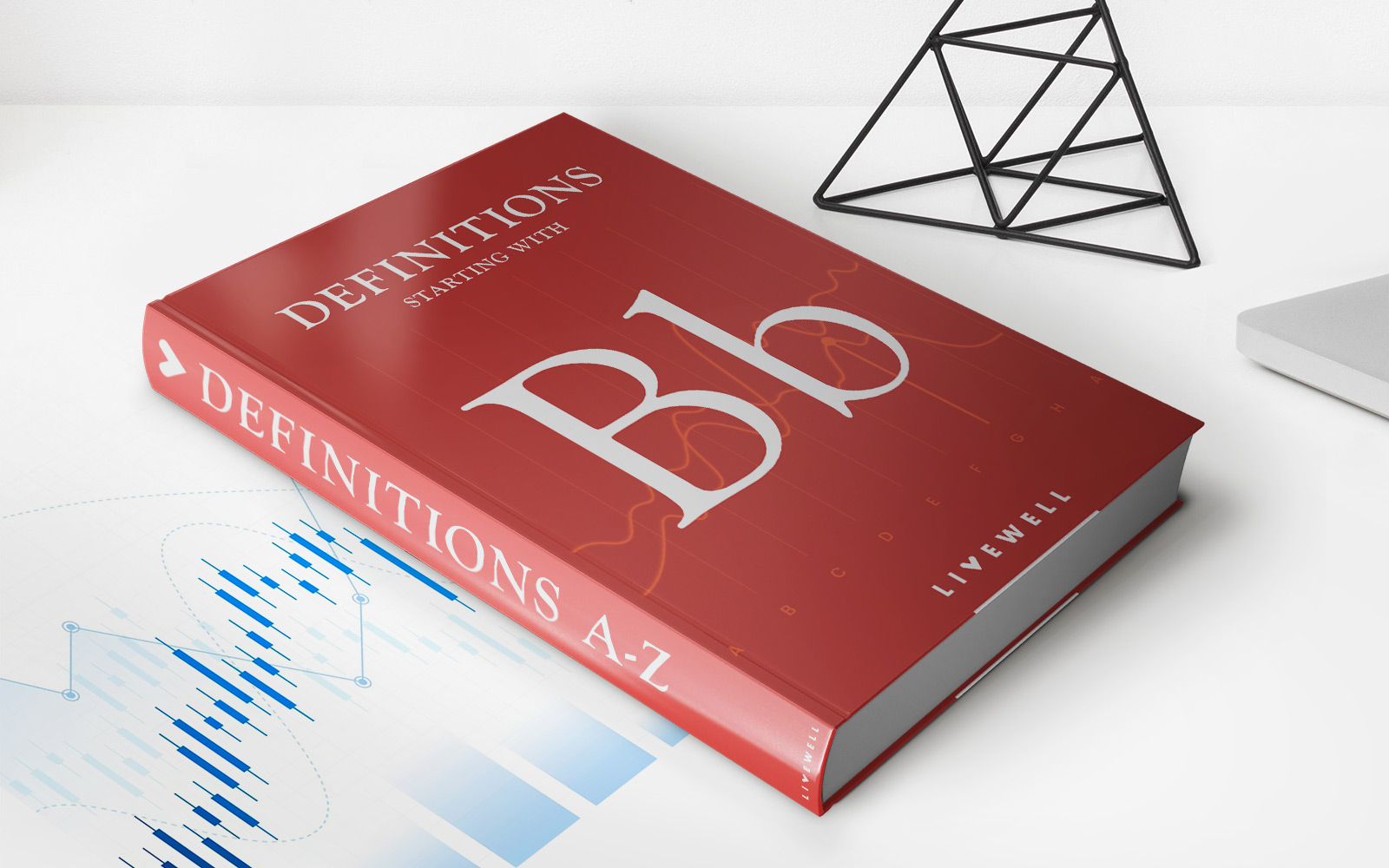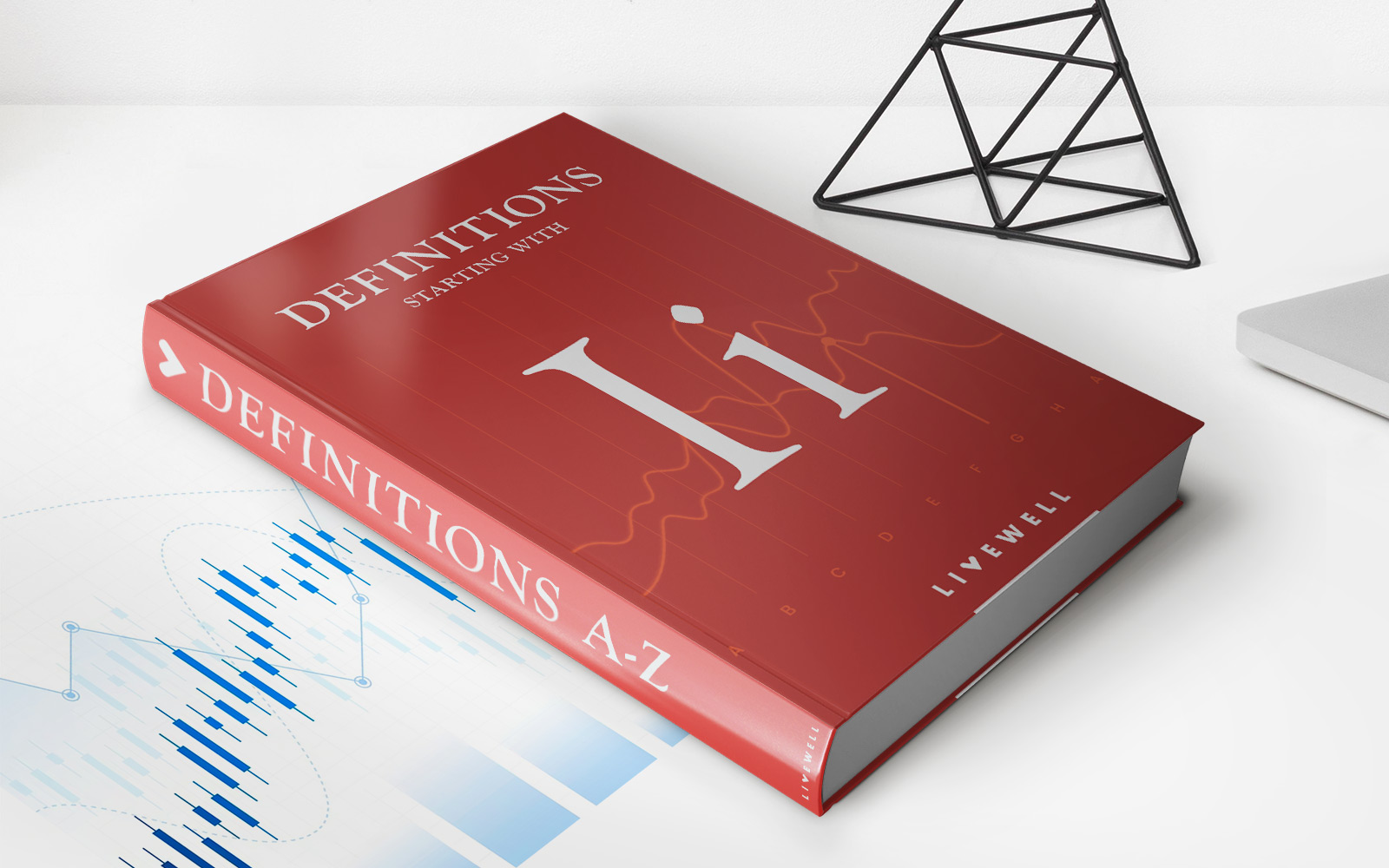

Finance
How Much Is The Homestead Credit In Wisconsin
Published: January 13, 2024
Learn about the Homestead Credit in Wisconsin and discover how it can help you with your finances. Find out the maximum amount you can receive and how to claim it.
(Many of the links in this article redirect to a specific reviewed product. Your purchase of these products through affiliate links helps to generate commission for LiveWell, at no extra cost. Learn more)
Table of Contents
Introduction
Welcome to our comprehensive guide on the Homestead Credit in Wisconsin. If you are a homeowner in the state, you may be eligible for this valuable tax credit that helps reduce your property tax burden. The Homestead Credit is designed to provide financial relief to low-income individuals and families, making homeownership more affordable.
Understanding the intricacies of the Homestead Credit can be complex, but we are here to break it down for you. In this article, we will provide you with a detailed overview of the Homestead Credit, including the qualifications, calculation methods, maximum credit amount, and the application process. By the end, you will have a clear understanding of how the Homestead Credit works and how it can benefit you.
Whether you are a first-time homeowner or have been living in your house for years, the Homestead Credit can significantly reduce your property tax burden. It can provide a welcome financial boost and potentially save you hundreds or even thousands of dollars each year. So, let’s dive in and learn more about this valuable tax credit and how you can take advantage of it.
Overview of the Homestead Credit
The Homestead Credit is a tax benefit provided by the state of Wisconsin to eligible homeowners. It is designed to assist low-income individuals and families in reducing their property tax payments. The credit can help alleviate the financial strain of homeownership and make it more affordable for those who need assistance.
To qualify for the Homestead Credit, you must meet certain income requirements and own and occupy a home in Wisconsin as your primary residence. The credit is based on the assessed value of your property and the amount of property tax you paid during the tax year.
It’s important to note that the Homestead Credit is not a direct reduction of your property tax bill. Instead, it is applied as a refundable credit on your Wisconsin income tax return. This means that even if you don’t owe any income tax, you may still be eligible to receive a refund based on the amount of the credit.
The Homestead Credit is a valuable benefit that can significantly reduce the financial burden of homeownership for eligible individuals and families. It is calculated based on a formula that takes into account your household income, property taxes, and the size of your household.
While the Homestead Credit can provide substantial relief, it is important to understand that it is not a one-size-fits-all solution. The amount of credit you receive will depend on various factors, including your income level and the property tax rate in your area. Additionally, there are certain limitations and restrictions that apply to the credit.
In the following sections, we will delve deeper into the qualifications for the Homestead Credit, the calculation methods, the maximum credit amount, and the application process. By the end, you will have a clear understanding of how the Homestead Credit works and how you can benefit from it.
Qualifications for the Homestead Credit
In order to be eligible for the Homestead Credit in Wisconsin, you must meet certain criteria. These qualifications are based on factors such as your income, property ownership, and residency status. Let’s take a closer look at the requirements:
- Income Limit: The first requirement for the Homestead Credit is meeting the income limit set by the state. The limit varies based on your filing status (single, married filing jointly, head of household) and the number of qualifying children you have. It’s important to note that only certain types of income are considered for the purpose of calculating the credit.
- Homeownership Requirement: To qualify, you must own and occupy a home in Wisconsin as your primary residence. This means that rental properties or second homes are not eligible for the credit. The property must be located in Wisconsin and must be used as your primary place of residence.
- Residency Status: You must be a legal resident of Wisconsin in order to be eligible for the Homestead Credit. This means that you must have a permanent address in the state and maintain Wisconsin as your primary residence.
- Age Requirement: There are no specific age requirements to qualify for the Homestead Credit. It is available to individuals of all ages, as long as they meet the other eligibility criteria.
It’s important to note that the Homestead Credit is not available to everyone. It is specifically designed to assist low-income individuals and families who may be struggling with the financial burdens of homeownership. The credit is meant to provide relief to those who need it the most.
If you believe you meet the qualifications for the Homestead Credit, it’s important to gather all the necessary documentation and information to support your application. This may include proof of income, property ownership, and residency. We will discuss the application process and required documentation in more detail in the next section of this guide.
Now that you have a better understanding of the qualifications for the Homestead Credit, you can determine if you meet the requirements and are eligible to apply. Remember, it’s always a good idea to consult with a tax professional or visit the Wisconsin Department of Revenue website for the most up-to-date information on the Homestead Credit and its qualifications.
Calculation of the Homestead Credit
The calculation of the Homestead Credit in Wisconsin is based on a formula that takes into account various factors, including your household income, property taxes, and the size of your household. Understanding how the credit is calculated can help you estimate the potential benefit you may receive. Let’s explore the steps involved in calculating the Homestead Credit:
- Determine Household Income: The first step is to determine your household income. This includes any taxable and nontaxable income earned by all members of your household. It’s important to note that only specific types of income, such as wages, salaries, pensions, and certain benefits, are considered for the Homestead Credit calculation.
- Calculate Property Tax Liability: Next, you need to determine your property tax liability for the tax year. This includes the total amount of property taxes paid on your primary residence. Keep in mind that only property taxes levied by the government are considered for the calculation. Special assessments and homeowner association fees are not eligible.
- Apply Credit Percentage: Once you have determined your household income and property tax liability, you will apply a credit percentage to calculate the credit amount. The credit percentage is determined based on your income and the size of your household. It varies depending on income brackets and ranges from 0% to a maximum of 12%.
- Cap the Credit Amount: While the credit amount is calculated based on the credit percentage, it is subject to a maximum cap. This means that the credit cannot exceed a certain amount set by the state. The maximum credit amount is adjusted annually and can vary based on economic factors and legislative changes.
- Compute the Homestead Credit: Finally, you will compute the Homestead Credit by multiplying your property tax liability with the credit percentage. If the calculated credit amount exceeds the maximum cap, it will be reduced to the maximum allowable amount.
It’s important to note that the Homestead Credit is based on a complex formula, and slight changes in income, property taxes, or household size can affect the final credit amount. To ensure accurate calculations, it is recommended to use the Homestead Credit Calculator provided by the Wisconsin Department of Revenue or consult with a tax professional.
By understanding the calculation method, you can estimate the potential benefit you may receive from the Homestead Credit. This information can help you plan your finances and make informed decisions regarding homeownership and property tax payments.
Maximum Homestead Credit Amount
The maximum Homestead Credit amount in Wisconsin is subject to annual adjustments and can vary based on economic factors and legislative changes. It is important to be aware of the current maximum credit amount, as it determines the upper limit of the credit you may receive. Here’s what you need to know about the maximum Homestead Credit amount:
The maximum credit amount is set by the state each year and is based on a combination of factors, including property tax rates, household income, and the size of your household. It serves as a cap on the credit you can claim, ensuring that the credit is targeted towards those who need it the most and preventing excessive benefits for higher-income homeowners.
While the maximum credit amount can vary, it is important to note that there are income thresholds that determine the credit percentages and the maximum credit allowed. As your income increases, the credit percentage decreases, resulting in a lower maximum credit amount.
For example, if your household income falls within the lower income brackets, you may be eligible for a higher credit percentage and a higher maximum credit amount. On the other hand, if your income exceeds the upper income limits, your credit percentage will be reduced, resulting in a lower maximum credit amount.
It’s important to stay updated with the maximum credit amount for the tax year in question. The Wisconsin Department of Revenue provides this information on their website, along with resources to help you calculate your potential credit amount based on your income and property tax liability.
Remember that the actual credit amount you receive may be lower than the maximum amount. It is calculated based on your income, property tax liability, and credit percentage. The credit amount cannot exceed your property tax liability, and if the calculated credit amount exceeds the maximum cap, it will be reduced to the maximum allowable credit amount.
Consulting with a tax professional or using the Homestead Credit Calculator provided by the Wisconsin Department of Revenue can help you estimate the maximum credit amount you may be eligible for based on your specific circumstances. Understanding the maximum credit amount can assist you in planning your finances and determining the potential benefits of the Homestead Credit.
Applying for the Homestead Credit
Applying for the Homestead Credit in Wisconsin is a straightforward process that requires submitting the appropriate forms and documentation to the Wisconsin Department of Revenue. Here are the steps to apply for the Homestead Credit:
- Gather Required Documentation: Before starting the application process, gather all the necessary documentation. This may include proof of income, such as wage statements, pension statements, and social security benefit statements. You will also need documents that verify your property ownership and residency, such as property tax statements and utility bills.
- Complete Form WI-139: The main form to apply for the Homestead Credit is Form WI-139, also known as the Wisconsin Homestead Credit Claim. This form is available on the Wisconsin Department of Revenue website or can be obtained by contacting their office. Fill out the form accurately and provide all the required information, including details about your income, property taxes, and household size.
- Submit the Application: After completing Form WI-139, submit your application to the Wisconsin Department of Revenue. You can file your application electronically through the department’s online portal or mail it to the designated address. Make sure to review your application for accuracy and include any supporting documentation required.
- Wait for Processing: Once your application is submitted, it will go through a processing period. The Wisconsin Department of Revenue will review your application and verify the information provided. This process can take several weeks, so it is important to be patient and allow sufficient time for processing.
- Receive Notification: After processing your application, the Wisconsin Department of Revenue will notify you of the outcome. If your application is approved, you will receive the Homestead Credit in the form of a refund or a reduction in your income tax liability, depending on your circumstances. If your application is denied or requires further action, the department will provide instructions on how to proceed.
It is important to note that the application for the Homestead Credit must be filed annually. Each year, you will need to submit a new application to claim the credit for that tax year. It is recommended to keep copies of all your application materials and supporting documentation for your records.
If you have any questions or need assistance during the application process, you can contact the Wisconsin Department of Revenue directly. They have staff available to answer your inquiries and provide guidance to ensure a smooth application process.
By following these steps and providing the necessary information and documentation, you can apply for the Homestead Credit and potentially receive a valuable reduction in your property tax burden.
Documentation and Supporting Documents
When applying for the Homestead Credit in Wisconsin, it is important to gather the necessary documentation and supporting documents to substantiate your eligibility. Providing accurate and complete documentation will help ensure a smooth application process. Here are some key documents you may need to include:
- Proof of Income: Include documents that verify your household income, such as wage statements, pension statements, or social security benefit statements. These documents should show the income earned by all members of your household.
- Property Tax Statements: Include copies of your property tax statements for the tax year in question. These statements should clearly show the amount of property taxes paid for your primary residence.
- Residency Proof: Provide documents that establish your residency in Wisconsin. This may include utility bills, rental agreements, or other official documents that demonstrate your permanent address in the state.
- Proof of Property Ownership: Include documentation that verifies your ownership of the property. This may include a copy of the deed, property title, or mortgage documents.
- Household Information: Include information about the size of your household, including the names and ages of all individuals living in the residence. This information is essential for calculating the credit percentage and determining eligibility.
- Other Supporting Documents: Depending on your specific circumstances, you may need to provide additional supporting documents. This could include documents related to rental income, self-employment income, or other income sources that are relevant to your application.
It is important to provide accurate and up-to-date documentation to support your application. Ensure that all documents are legible and that any relevant information is clearly visible. Keep copies of all documents for your records in case of any discrepancies or further inquiries.
Remember, the Wisconsin Department of Revenue may request additional supporting documents or clarification if needed. It is important to respond promptly to any such requests to avoid delays in the processing of your application.
If you have any questions about the documentation or supporting documents required for the Homestead Credit application, you can contact the Wisconsin Department of Revenue or consult with a tax professional. They can provide guidance and assistance to ensure that you have all the necessary documents in order to submit a complete and accurate application.
Frequently Asked Questions (FAQs)
Here are some frequently asked questions about the Homestead Credit in Wisconsin:
- Who is eligible for the Homestead Credit?
Eligibility for the Homestead Credit is based on factors such as income, property ownership, and residency. Low-income individuals and families who own and occupy a home in Wisconsin as their primary residence may be eligible for the credit. - How is the Homestead Credit calculated?
The Homestead Credit is calculated based on a formula that considers factors like household income, property taxes, and household size. The credit amount is determined by applying a credit percentage to the property tax liability, subject to a maximum cap. - Is the Homestead Credit a one-time benefit?
No, the Homestead Credit is not a one-time benefit. It must be applied for annually, and eligibility is assessed for each tax year. You need to submit a new application each year to claim the credit. - Can I claim the Homestead Credit if I rent my property?
No, the Homestead Credit is only available to homeowners. You must own and occupy a home in Wisconsin as your primary residence to be eligible for the credit. - Is the Homestead Credit refundable?
Yes, the Homestead Credit is a refundable tax credit. This means that even if you don’t owe any income tax, you may still be eligible to receive a refund based on the amount of the credit. - Can I claim the Homestead Credit if I am a senior citizen?
Yes, senior citizens can be eligible for the Homestead Credit if they meet the income, property ownership, and residency requirements. The credit is not limited to a specific age group. - What is the deadline for applying for the Homestead Credit?
The deadline for applying for the Homestead Credit is typically April 15th of the tax year, but it is subject to change. It is important to check the Wisconsin Department of Revenue website or consult with a tax professional for the most up-to-date information on deadlines.
These are just a few of the most commonly asked questions about the Homestead Credit in Wisconsin. If you have further inquiries or need more information, it is recommended to visit the Wisconsin Department of Revenue website or consult with a tax professional. They can provide answers and guidance specific to your situation.
Conclusion
The Homestead Credit in Wisconsin provides crucial financial support to low-income homeowners, helping to alleviate the burden of property taxes and make homeownership more affordable. Understanding the qualifications, calculation methods, and application process can empower you to take advantage of this valuable tax credit.
In this comprehensive guide, we have provided you with an overview of the Homestead Credit, including the qualifications, calculation methods, maximum credit amount, and the process for applying. We have also discussed the importance of gathering the necessary documentation and supporting documents to support your application.
By meeting the income requirements, owning and occupying a home in Wisconsin as your primary residence, and providing accurate documentation, you can potentially take advantage of the Homestead Credit and reduce your property tax burden. The credit amount is calculated based on a formula that considers income, property taxes, and household size, and it is subject to a maximum cap.
Remember, the Homestead Credit is an annual benefit, and you must submit a new application each year to claim the credit for that tax year. Stay up-to-date with the deadlines set by the Wisconsin Department of Revenue to ensure timely submission of your application.
If you have any specific questions or concerns related to your eligibility or the application process, it is recommended to consult with a tax professional or visit the Wisconsin Department of Revenue website for comprehensive and accurate information.
By understanding the Homestead Credit and the potential benefits it offers, you can make informed decisions regarding homeownership, property tax payments, and financial planning. The Homestead Credit can provide significant relief and help make the dream of homeownership a reality for many low-income individuals and families in Wisconsin.














